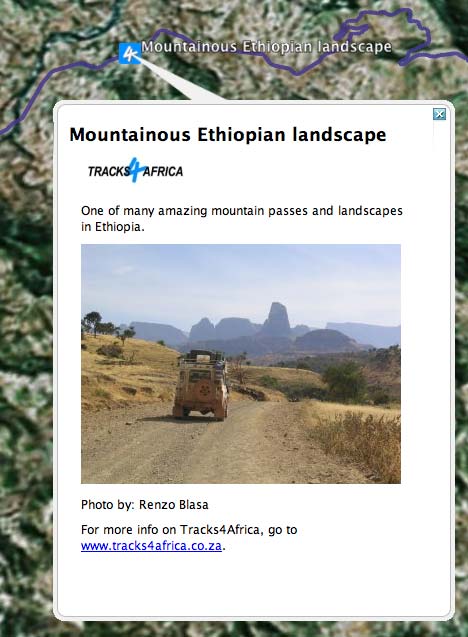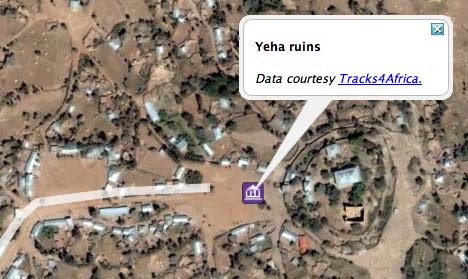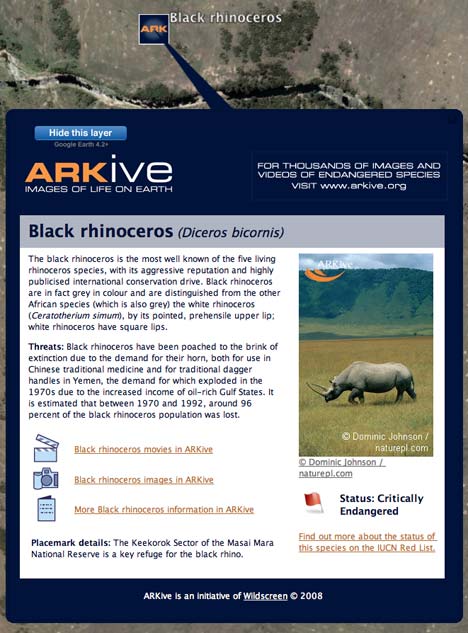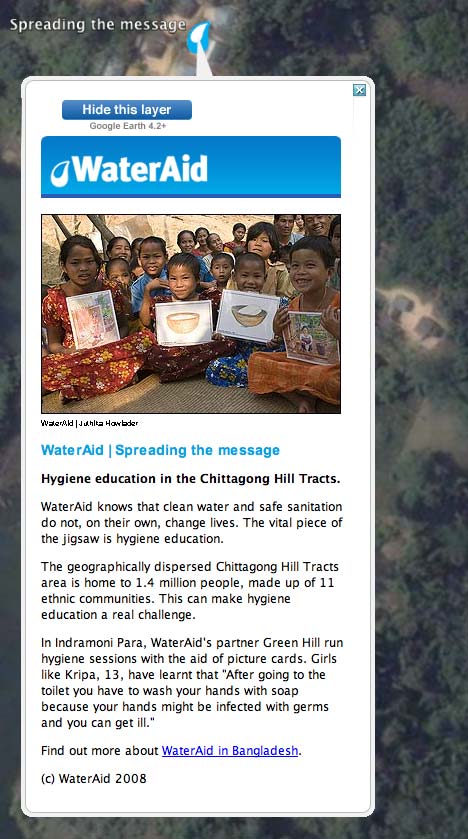It’s raining new and updated Google Earth default layers!
Tracks4Africa: I happen to live in Africa, so I’ve been especially grateful for the existence of the Tracks4Africa layer in Google Earth, a collaborative effort by GPS-wielding travellers to map a continent sorely in need of good maps. The Tracks4Africa layer is far more accurate than Google’s own default road layer, and also includes such essential information as petrol stations and police checkpoints (all of which has come in useful in preparing routes in both Egypt and Ethiopia).
Sometime in the last few weeks, and I suspect as recently as in the last day or so, the layer has gotten a whole lot more sophisticated: It’s turned into a folder containing categorized roads, but also further folders for hiking trails, points of interest, activity destinations and &mdash this is unexpected — “community photos”:

All of this means that some very out-of-the way destinations that I previously had some trouble finding myself on Google Earth are now clearly marked, as is the way there:

ARKive: ARKive (get it?:-) is “a unique collection of thousands of videos, images and fact-files illustrating the world’s species” that lists Sir David Attenborough as a fan. They’ve now got a layer depicting georeferenced endangered species on Google Earth, like so:

WaterAid: is a charity whose mission is to “overcome poverty by enabling the world’s poorest people to gain access to safe water, sanitation and hygiene education.” A whole bunch of placemarks in South Asia and Africa explains WaterAid’s work. For a relatively unknown charity working on one of the biggest upcoming issues in development, there is no better bang for the buck in getting your work known than getting onto Google Earth, like this:

Very nice; I hope geo-developers plan on making these collections available for browser maps like Google Maps too. Google Earth strains my system a lot more than my web browser, especially if I have both open, or heavy layers in GE.